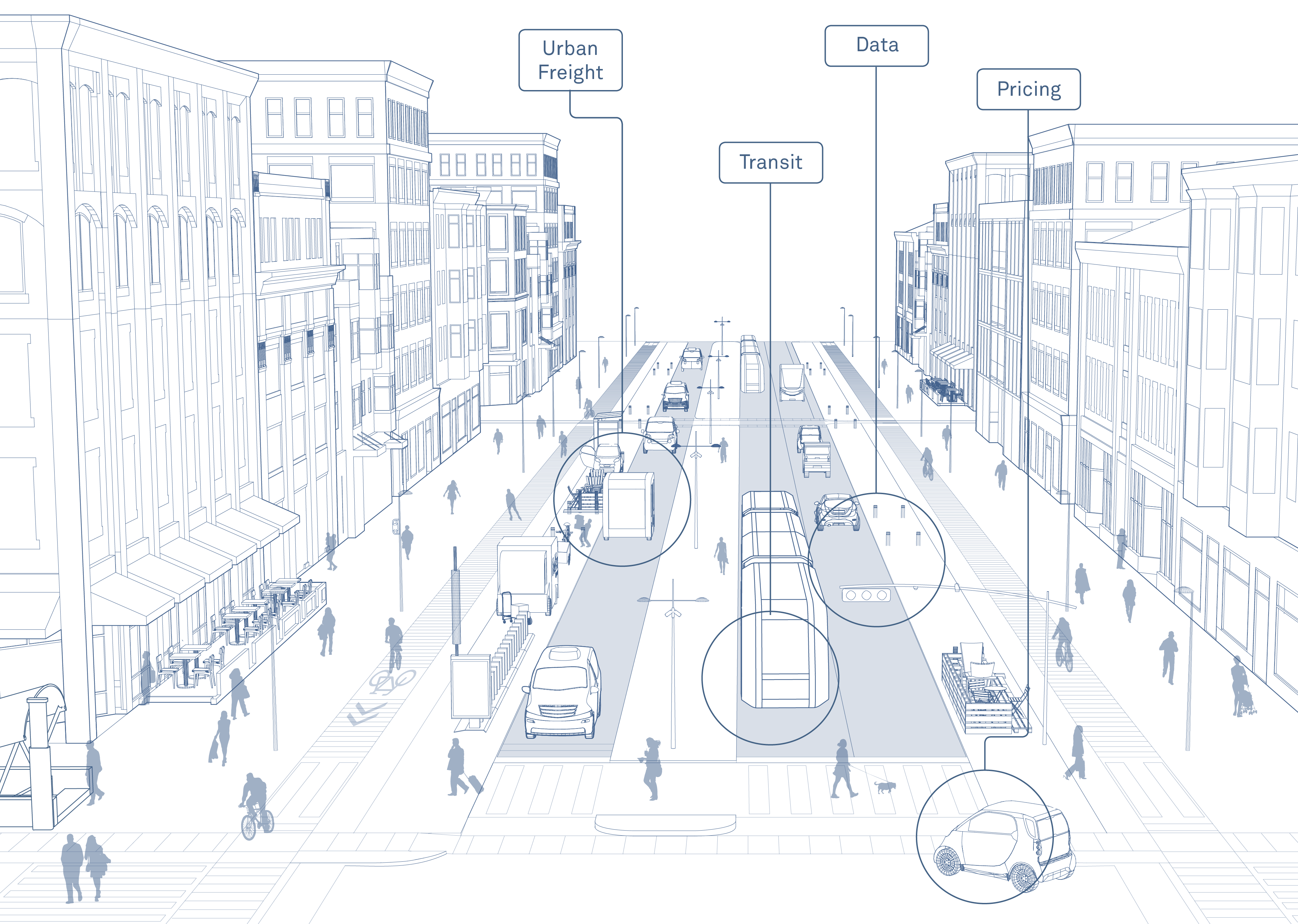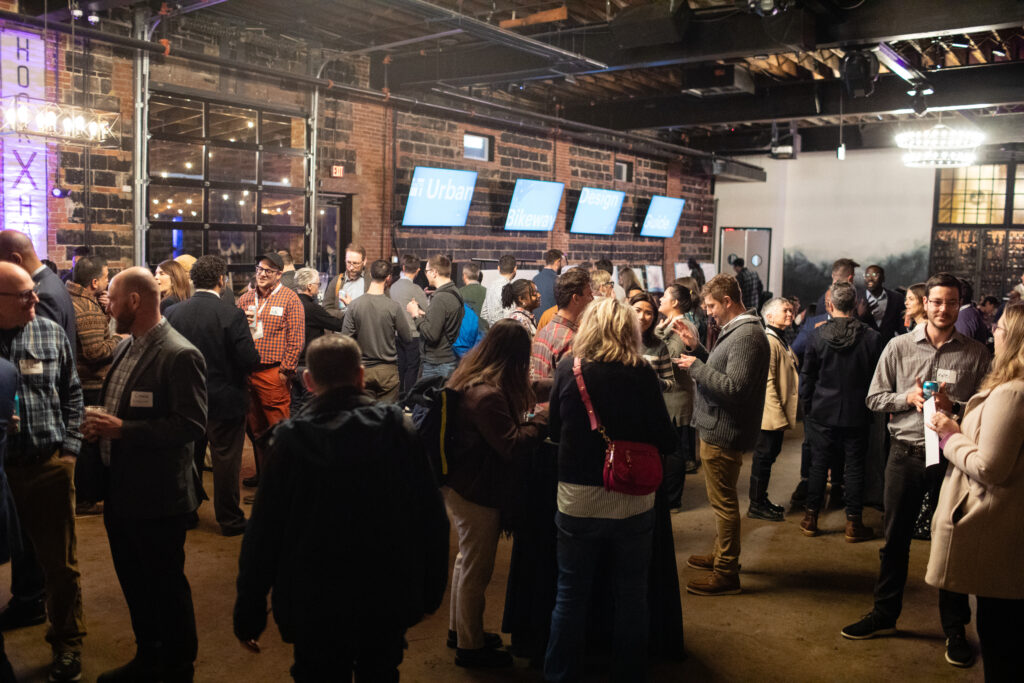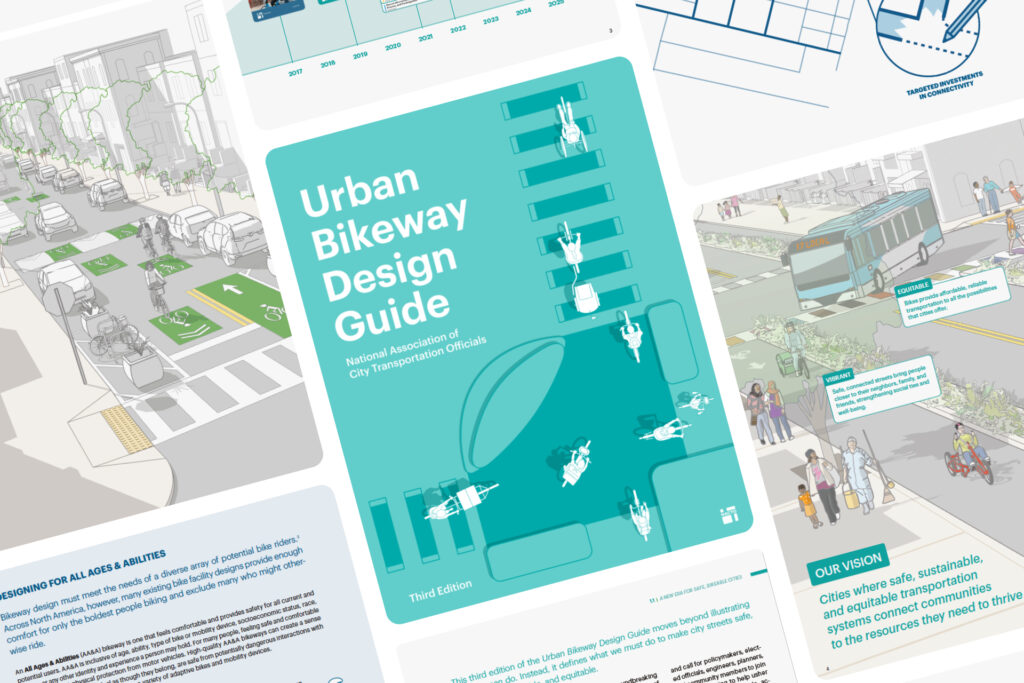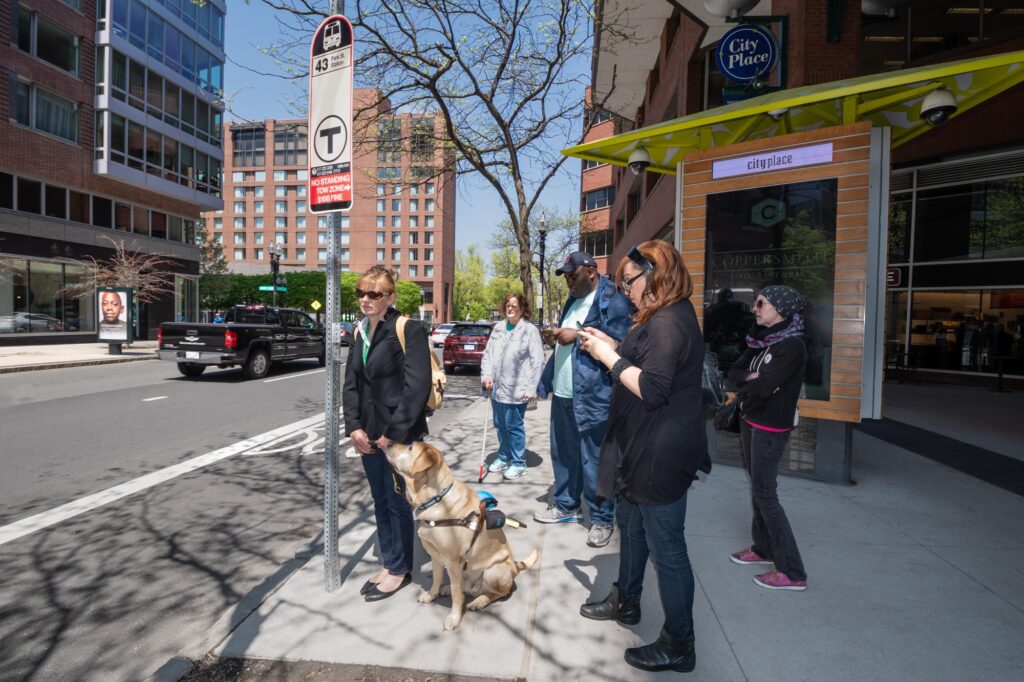Document Focuses on Policies Necessary for Autonomous and Future Technology to Help Achieve City Goals
For Immediate Release | September 9, 2019
Contact: Alexander Engel | [email protected] | 646-568-0747 (m)

(Toronto) The National Association of City Transportation Officials (NACTO) today released the second edition of the Blueprint for Autonomous Urbanism, focusing on the near-term policies and decisions that are necessary for autonomous technologies to improve transportation outcomes, rather than lead to an overall increase in driving, greenhouse gas emissions, and diminished public space in cities. Developed with a steering committee from NACTO’s 81 member cities and transit agencies, and based on the sweeping vision for city streets of the future in the first edition of the Blueprint, the second edition details the concrete steps that will need to be taken to ensure an equitable, people-first city.
Key policies areas include:
- Transit: Cities should commit to prioritizing high-quality on-street transit, and use technologies available today, such as computer-aided dispatch and automatic vehicle location systems, to improve efficiency and create services that attract riders. Future automated technologies, already in use in many rail systems, can enable transit agencies to expand service, serving more people for the same operating cost.
- Pricing: Autonomous vehicles could make driving easier and cheaper than it is today. Increased mobility will provide multiple benefits but, absent policy mechanisms and incentives to encourage people to use the most efficient modes, traffic and pollution, already at crippling levels in many cities, will continue to increase. Congestion pricing today, paired with new technologies that could allow governments to gauge traffic in real time and accurately price travel demand, is crucial to influencing travel behavior.
- Data: As an increasing amount of data is collected in the public realm, ensuring that data is appropriately collected and protected by cities and companies alike is an increasingly urgent concern. With a coordinated approach to enhancing asset data, using open data specifications, and updating data management policies, public agencies can ensure access to crucial planning data while strengthening privacy protections for individuals.
- Urban Freight: Cities must develop sophisticated urban freight policies that group deliveries to reduce the number of freight trips and increase efficiency and safety. While autonomous technology could make long-distance freight movement much more efficient, these technologies could also be detrimental within cities, flooding streets, sidewalks, and airspace with bots and drones. Downsizing vehicles, managing the curb, and keeping human workers for the last 50 feet of deliveries will be essential to managing the increasing volumes of goods movement within cities.
The second edition of the Blueprint for Autonomous Urbanism also builds on the street designs envisioned in the first edition, outlining designs, policies, and tools to enable safe, frequent crossings, more sustainable and efficient use of the street, and a more vibrant pedestrian realm. It also includes more detailed sections on the actions individual city departments, from IT to fleet services to parking authorities to employment and administrative services, should take to prepare as automated technology becomes more mature. Traditional and emerging areas of authority, across various levels of governments, are explored, as are the effects of AVs on employment and labor in cities.
“When the automotive age swept the nation a century ago, cities responded not by adapting cars and trucks to the varied uses of the street, but with a relentless clearcutting of obstacles from curb to curb,” said Janette Sadik-Khan, Principal at Bloomberg Associates and NACTO Chair. “As we anticipate the arrival of self-driving vehicles on city streets today, we have a historic opportunity to correct these mistakes, which starts with a new blueprint for cities.”
“City governments must work rapidly to change how street space is designed and allocated before yesterday’s values become enshrined in tomorrow’s concrete,” said Corinne Kisner, Executive Director of NACTO. “Taking proactive steps now means a future where people come first in an autonomous age. The Blueprint for Autonomous Urbanism outlines the policies for a thriving city: steps to improve our streets and cities now and with the technological advances to come.”
“Transit is the key to a people-centred autonomous future,” said Dale Bracewell, Manager of Transportation Planning for the City of Vancouver. “In focusing on improving bus and rail transit today, cities hold the toolbox for accommodating growth without increasing congestion. NACTO’s Blueprint for Autonomous Urbanism shows the steps cities can take to get more benefits out of their streets, using today’s and future technologies to augment transport’s safest and most effective mode: high-quality transit.”
“Automated vehicles have the potential to reshape and redefine how cities, including Toronto, plan transportation networks,” said Barbara Gray, General Manager of Transportation, City of Toronto. “Using these kinds of guidelines and ideas, our city and others can be AV ready and be better positioned to both lead and respond in a future with automated vehicles.”
“Done right, autonomous technologies could increase access to jobs and housing across the socio-economic spectrum, accelerate the transition to clean electric vehicles, and complement public transit for those currently poorly served and by addressing the last-mile challenge,” said Anthony Eggert, Director of Transportation at ClimateWorks Foundation. “Realizing these benefits, however, will require strong action by cities—this blueprint lays out the key policies and practices that cities can, and should, pursue today.”
Development of the Blueprint for Autonomous Urbanism was supported by Bloomberg Philanthropies and ClimateWorks Foundation. It is available as a free download at nacto.org/blueprint.
Download sample images and spreads from the Blueprint (zip) >
###
About the National Association of City Transportation Officials (NACTO)
NACTO is an association of 81 major North American cities and transit agencies formed to exchange transportation ideas, insights, and practices and cooperatively approach national transportation issues. The organization’s mission is to build cities as places for people, with safe, sustainable, accessible, and equitable transportation choices that support a strong economy and vibrant quality of life. To learn more, visit nacto.org or follow us on Twitter at @NACTO.


